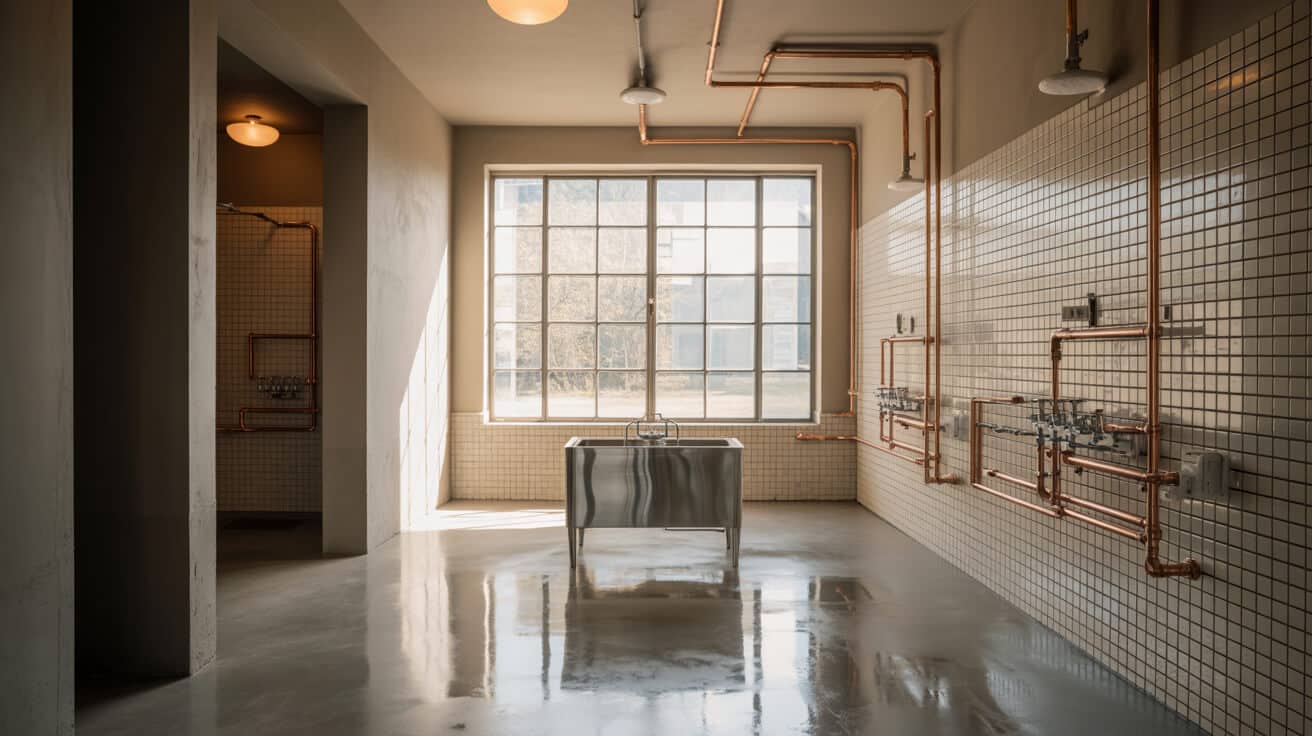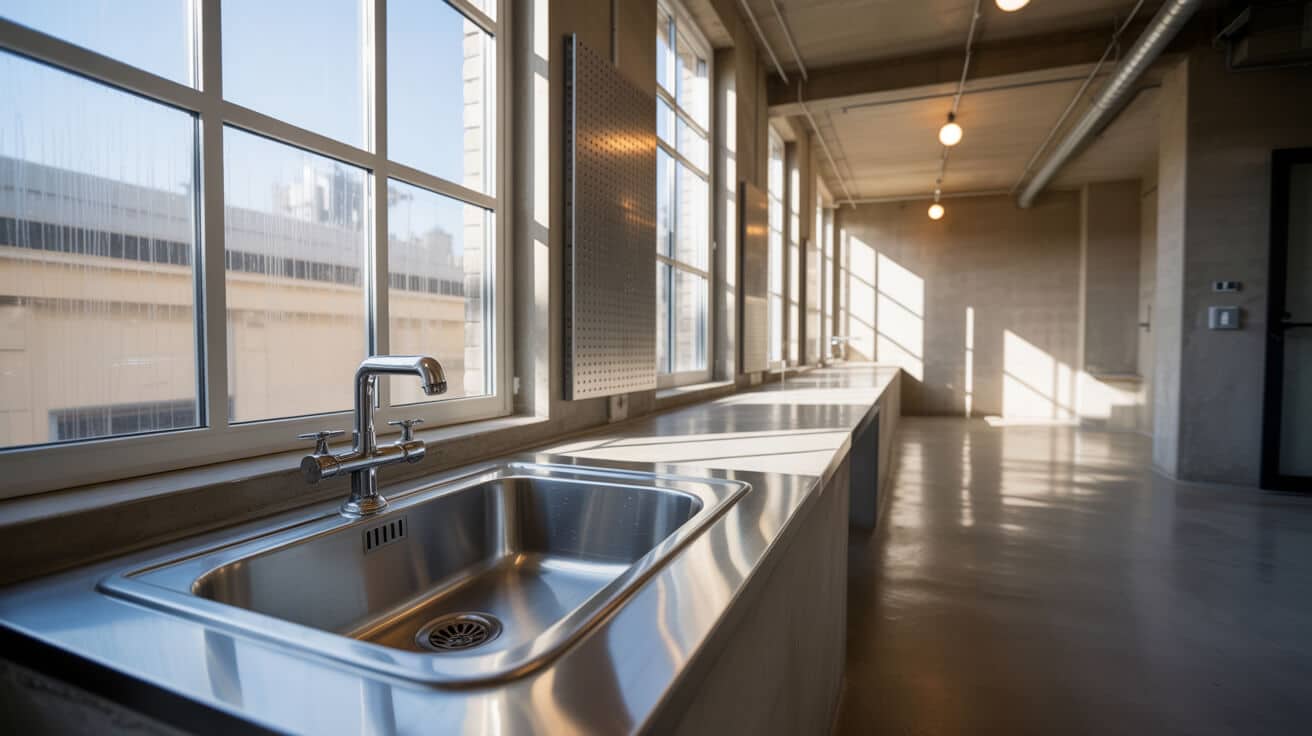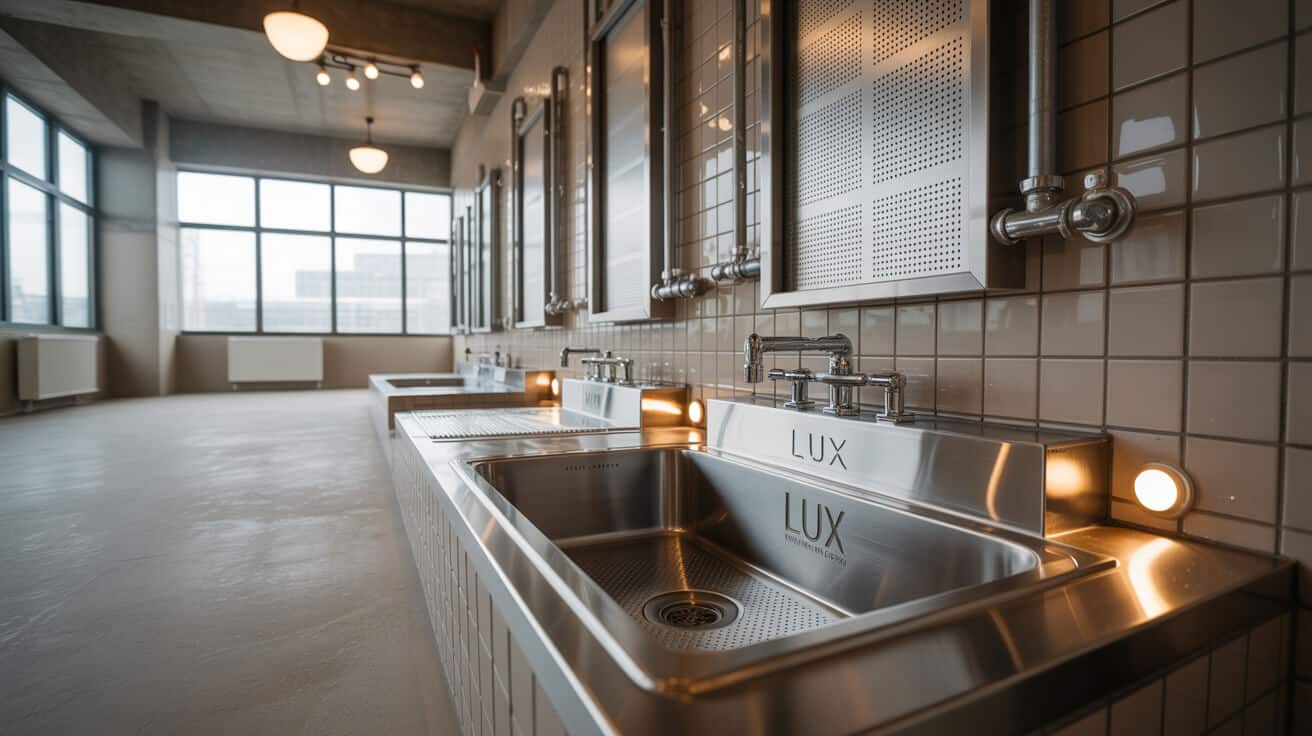Warehouses operate as dynamic logistics, storage, and processing centres—where even minor water system failures can prompt disruptive or catastrophic costs. The scale and diversity of activities, variable occupancy, and environmental exposures create a web of visible and invisible risks: from freezing pipes threatening your supply chain, to unmonitored leaks quietly deteriorating your assets’ value. In this context, plumbing dictates not only facility functionality but also your organisation’s resilience, duty-of-care, and operational continuity.
Lead
Plumbing in warehouses achieves far more than water delivery and waste removal. It establishes a hidden nervous system—ensuring your operations remain sanitary, safe, and aligned with regulatory expectations. Commercial and industrial warehouses are unique: requiring highly adaptable systems designed for extended pipe runs, sudden peak loads, staff amenities, fire integration, and resistant materials fit for process-specific hazards. Responsible asset management, attentive contractor support, and up-to-date certification are essential for mitigating downtime, enhancing compliance, and cultivating an operational edge for your company and stakeholders.
Etymology or name origin
The word “warehouse” traces to Middle English roots, originally describing any structure where wares or goods are stored; with industrialization, it has come to mean large-scale, often multi-zoned facilities central to the logistics and manufacturing supply chain. “Plumbing” stems from the Latin “plumbum,” for lead—historically the material of water conduits—while “industrial plumbing” designates water and drainage solutions for large-scale, process-driven environments. Today’s terminology reflects an evolution from simple utility to deeply regulated, risk-sensitive infrastructure encompassing concepts like “backflow prevention,” “SUDS” (sustainable drainage), and “welfare compliance.”
Overview / Context
Warehouses require multi-system plumbing infrastructure encompassing main potable water supply, process lines, booster assemblies, re-circulation loops, floor drainage, and dedicated fire suppression connections. Unlike domestic projects, these buildings must accommodate:
- Extensive pipework networks spanning multiple temperature zones and occupancy levels.
- Frequent integration with heating, ventilation, process automation, and fire systems.
- Stringent legal mandates for hygiene, Legionella control, and staff welfare.
- Environmental protections including SUDS, chemical containment, and consented discharge.
- Varying risk profiles based on long pipe runs, cold stores, hazardous material storage, and automated racking.
The result is a landscape where every decision—material, route, control point—can impact the reliability, compliance, and even reputation of your company. Curiosity about “what could go wrong” drives informed managers to seek comprehensive, defensible, and future-proofed plumbing advice.

History
Origins and early adoption
Early warehouses featured rudimentary systems, often minimal or external, directed toward loading dock maintenance and basic staff sanitation. With the industrial revolution and growth of port and railway logistics, systems advanced to handle greater loads, including larger-diameter pipework and internal drainage.
20th-century engineering
By the mid-20th century, innovations such as galvanised steel pipes, pressure regulation, pumped drainage, and increasingly standardised sanitary facilities enabled larger and more varied warehouse functions. Codes crystalized minimum standards for drinking water, facility hygiene, and incident containment.
Contemporary evolution
Recent decades have ushered in mandatory risk management (e.g., Legionella protocols), advances in modular and composite piping (copper, MDPE, HDPE, ABS, and lined steel), automated monitoring, and integration with building management platforms. Regulatory pressure now mandates traceability—from initial design, through inspection, to everyday operation—shaping every aspect of new build and retrofit warehouse plumbing.
Core concepts and structural description
Pipework materials and routing
Selection of pipe materials is driven by your warehouse’s individual risk profile, water quality, and process compatibility:
- Copper: and steel provide reliability for domestic and heating circuits, offering corrosion resistance and strength.
- MDPE/HDPE plastics: are favoured for buried, external, or food-plant process lines.
- ABS/polypropylene: suit chemical zones or where aggressive waste must be managed.
Efficient routing means overhead or below-floor runs, with accessible isolation for rapid fault location. Racking, mezzanines, and staff areas dictate manifold and branching configurations.
Main supply, pressure management, and backflow control
Pressurised main supply may require break tanks and booster pump assemblies for extended buildings or when municipal mains are insufficient. Backflow devices protect both network and your potable water from contamination, while pressure-reducing valves maintain system integrity in response to shifting loads and operational zones.
Sanitary and welfare provisions
Legal frameworks require a proportional number of toilets, showers (where mandated), accessible units, and hand-wash stations. Typical installations use robust, modular fixtures for durability and ease of cleaning, positioned for efficient staff movement across shift operations.
Drainage systems
Gravity-based soil stacks move waste from sanitation areas, while surface and process drainage (including floor channels, interceptors, or sump pumps) handle chemical spills, stormwater, and cleaning effluent. Large-diameter pipes are common, and the presence of hazardous or food-handling zones often necessitates chemical-resistant materials and separated discharge lines.
Insulation and freeze protection
Pipe insulation is essential in unheated or exposed regions and for any external runs. Electrical trace heating may supplement mechanical protection in refrigerated or northern climate warehouses.
Fire system integration
Sprinkler feeds, wet or dry risers, and fire hose stations require physically isolated piping. Regulation mandates category 5 separation at points of crossover, and periodic inspection of valves and alarms.
Smart monitoring and controls
Process reliability depends on continuous monitoring—flow, pressure, temperature, and backflow testing. Data is vital for audit, early intervention, and regulatory self-assessment.
Functionality / Purpose / Applications
Water supply management
Robust supply maintains pressure for hygiene, cleaning, process operations, and, in emergencies, firefighting. Booster pumps and ring mains sustain distant or high-elevation endpoints, while break tanks add resilience.
Sanitation and welfare
Facilities provide legal sanitary accommodation and access, supporting hygiene, shift work, and inclusivity. Proper design, including infection-preventive measures (e.g., sensor taps, minimised touchpoints), is standard in regulated environments.
Process water for industrial operations
Warehouses often require specialised process water, routed independently or cross-connected to machinery washing, cooling, or production. Conflict-avoidance valves and chemical-resistant pipes protect against product contamination.
Drainage and spill containment
Efficient drainage prevents workplace hazards, environmental pollution, and business disruption. Features include silt and oil interceptors, roof drainage, yard gulleys, and backwater valves. Automated monitoring helps detect blockages or recursive flooding patterns due to extreme weather.
Fire protection infrastructure
Fire suppression plumbing operates independently but is governed by the same principles of redundancy, monitoring, and compliance. Systems are signposted and routinely tested for rapid response capability.
Asset and risk management
Effective maintenance and automated diagnostics allow you to prevent escalation—avoid hidden leaks, minimise downtime, and uphold compliance with company and regulatory policies.
Classifications / Types / Variants
| Warehouse Category | Key Plumbing Features | Material/Design Choices |
|---|---|---|
| Ambient Storage | Standard pipe and drainage, focus on durability | Copper, steel, unheated pipe insulation |
| Refrigerated/Cold Storage | Enhanced insulation, condensation and freeze-proof | Trace-heated pipe, MDPE, automated alarms |
| Hazardous Materials | Chemical/spill containment, acid-resistant drains | Polypropylene, ABS, separate stacks |
| Automated/High-Bay | Multi-level, remote maintenance | Zoned manifolds, wireless monitoring |
Pipework Materials
- Copper: General pipelines, heating circuits.
- Steel: Plant rooms, pressure systems.
- MDPE/HDPE: Buried, external, process.
- ABS/Polypropylene: Chemical drainage, hazardous waste.
Drainage Variants
- Gravity soil stacks
- Pumped discharge systems
- SUDS-enabled perimeters
- Chemical/food-grade segregated lines

Systems / Tools / Methodologies
System design
Comprehensive system planning involves hydraulic calculations, mapping pipework for efficiency and access, and verifying adequate capacity for fire emergencies. BIM and CAD are used to model interactions and sequence physical installations, enabling provision for routine inspection and future system extension.
Installation tools and processes
- Pipe cutters (manual and powered), press-fit tools, soldering kits, solvent and crimping systems for various materials.
- Mechanical supports, anchor systems, and vibration dampers protect against pipe fatigue.
- Commissioning includes pressure testing, chlorination, and post-installation performance logging.
Maintenance and diagnostics
PPM protocols govern inspection and testing timelines. Leak detection employs both ultrasonic and dye tracing. Worst-case failure scenarios (freeze, burst, contamination) are iteratively mapped and mitigated to maintain compliance and minimise business exposure.
Documentation and reporting
Installation and maintenance are recorded in detailed logbooks or asset management systems, capturing compliance proofs for all statutory inspection points and building handovers.
Stakeholders / Entities Involved
Asset owners and property managers
Responsible for long-term planning, compliance, and capital investment decisions, often engaging certified partners such as Plumbers 4U for code-compliant upgrades and repairs affecting your business security.
Facilities management and service providers
Oversee daily operation, planned maintenance, and interface with contractors. Skilled in risk mapping, emergency response, and managing building-wide compliance routines—serving as the user-facing “stewards” of your service reliability.
Contractors and technical professionals
Execute specialist tasks, deliver technical consultancy, and deploy advanced diagnostic routines—essential for addressing system complexity and meeting regulatory obligations.
Tenants and workforce
Engage directly with system outputs (sanitary facilities, emergency showers, spill response features) and report anomalies or urgent repairs. Staff input often surfaces “unseen” early-warning threats to the workspace.
Certification and regulatory bodies
Provide approval, audit, and oversight to ensure each system meets public, environmental, and legal thresholds—WRAS, Gas Safe, local authorities, and occupational health officers included.
Legal / Regulatory / Ethical Considerations
Building and water regulations
Compliance is structured around:
- Part G: Sanitation and hot water
- Part H: Drainage and waste disposal
- Part L: Conservation of fuel and power
- Water Supply Regulations 1999: Material and quality requirements
Best practice calls for certified and WRAS-approved components—where your company’s choices affect legal and operational certainty.
Health and safety frameworks
Employers must provide safe, accessible water and sanitation both for your workforce and site visitors under the Health & Safety at Work Act and Equality Act.
Legionella and disease prevention
UK-specific codes (ACoP L8, HSG274) dictate inspection, risk assessment, and recordkeeping on all water systems, with penalties for non-compliance.
Certification and professional standards
Plumbers 4U’s accredited service model advances both peace of mind and compliance, reducing the risk of audit failure, business interruption, or penalties.
Reporting, audit, and notification
Operators are charged with comprehensive documentation, timely event notification, and easy retrieval of compliance proofs for every stage—installation, modification, and inspection.
Performance Metrics / Data / Measurements
System performance criteria
- Flow rates and pressure: Monitored at strategic nodes to ensure supply stability, prevent damage, and maintain user confidence.
- Water quality: Regularly sampled and reported for audit; high standards lower legal, operational, and insurance risk.
- Inspection intervals: Detailed logs track every maintenance event, anomaly, and repair.
- Response times/MTBF: benchmarked for management and insurance; rapid reaction capacity is a differentiator for resilient organisations.
| Metric | Definition / Purpose |
|---|---|
| Flow Rate | Litres per second at main/critical branch points |
| Static/Dynamic Pressure | Measured at supply and endpoint, compared to targets |
| PPM Compliance | % planned vs. actual maintenance achieved annually |
| Water Quality | Microbiological and contaminant benchmarks |
| Incident Response | Time to address urgent issue/restore functionality |
Records and efficiency
Sites and companies skilled in meticulous recordkeeping consistently minimise unexpected costs and investigations, building a culture of environmental and regulatory reliability.
Challenges / Barriers / Limitations
Technical and operational risks
- Freezing and burst pipes: High-bay, unheated, or cold storage suffers high risk; insulation, heat tracing, and smart valves are recommended.
- Pressure fluctuations: Sudden, unpredictable demand spikes across shift changes or fire events can stress systems, requiring secondary reservoirs or break tanks.
- Complexity and access: Automated racking, split zones, or high security can limit repair speed or thoroughness; solutions include modular system design and remote isolation capability.
Economic and compliance obstacles
- Downtime/insurance impacts: Even brief water failures can cause major goods disruption or loss; compliance lapses can void insurance or trigger litigation.
- Sustainability requirements: Regulations increasingly demand SUDS, water saving, and enhanced environmental reporting, challenging older or poorly maintained facilities.
- Responsibility confusion: Shared or poorly documented networks risk lapses in maintenance and inspection.
- Staff welfare exposure: Failure to meet legal welfare requirements can damage recruitment and retention or trigger authority intervention.
Impact / Influence / Legacy
High-quality warehouse plumbing systems underpin business continuity, staff health, and legal protection. A culture of proactive maintenance and compliance, supported by reliable service providers such as Plumbers 4U, improves operational reliability, reduced incident rates, and long-term asset value for your company. System failures—publicised or quietly costly—trigger new legal frameworks, deeper due diligence, and raise quality expectations sector-wide. Reliable systems build trust with tenants, insurers, and the wider logistics community, reinforcing your organisation’s reputation for responsible stewardship even as infrastructure remains invisible.
Future directions, cultural relevance, and design discourse
Further advances in sustainable drainage, modular retrofitting, and predictive maintenance promise to balance cost, resilience, and compliance in modern warehouses, shaping both construction and operational practices. Future regulations—emphasising water efficiency, carbon neutrality, and social responsibility—will define the next era of facility infrastructure, placing additional value on trusted, data-driven partners. The cultural symbolism of warehouses as logistics “backbones” amplifies the importance of invisible infrastructure, creating unique opportunities for companies to demonstrate their organisational values through the unseen systems they maintain and evolve.

